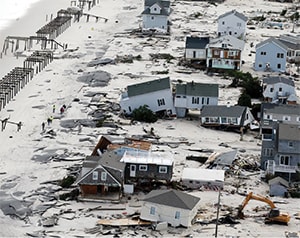Understanding Community Resilience and Recovery after Disasters

The United States experienced severe hurricanes, wildfires, and other natural disasters in 2017. These events highlight the importance of community resilience, the sustained ability of communities to withstand and recover from adversity. CDC is supporting research at Johns Hopkins University and the University of Delaware Disaster Research Center to develop a complex mathematical model that predicts community functioning and ability to recover following different types of public health disasters and emergencies.
This research project, the Composite of Post-Event Well-being (COPEWELL), has generated resilience maps for all 3100+ U.S. counties. New York City has also conducted pilot studies to apply the model at a neighborhood level. In addition, the COPEWELL team is collaborating with FEMA’s Division of Community Preparedness to develop a toolkit to help local communities apply the COPEWELL model in Chester County, Pennsylvania. This will help communities assess their current resilience and prioritize interventions that will help them bounce back after disasters.